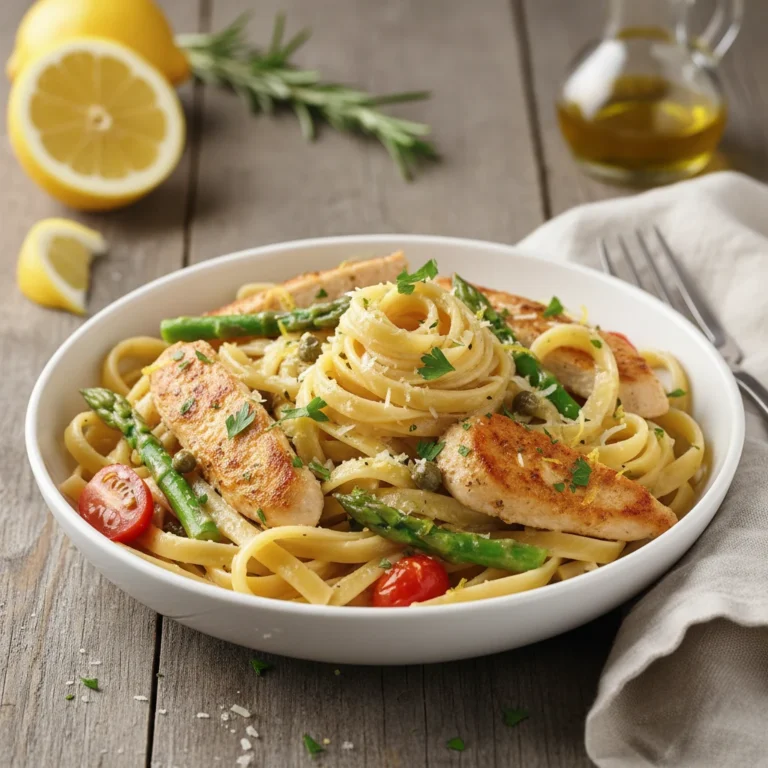Steam Juicer Recipes That Turn Fruit Into Liquid Gold
Small-batch canning, bold flavor, low mess—clear, shelf-stable juice and creative syrups from grapes, apples, and berries.
You’ve got fruit on the counter and big promises in your head. Here’s the high-leverage move: use a steam juicer to pull clean, clear juice with almost zero hands-on time. No sticky centrifuge. No foam party. Just hot, vivid flavor ready for sipping, bottling, or flipping into syrups and jellies. If you want maximum yield, minimum mess, and bragging rights, this is the play.
I’ll show you one base method that works for apples, grapes, berries, and more. You’ll get options for sweeteners, spices, and acidity—so you control clarity, shelf life, and punch. We’ll also cover canning, freezing, and the tasty fate of leftover pulp. Sound like a weekend win? Cool—let’s build your best juice operation.
What Makes This Recipe Awesome

It’s efficient. The steam does the heavy lifting, extracting juice while you step away. You’ll get high yield without grinding, straining, or babysitting several sieves.
It’s clean and clear. Steam-juiced liquid looks like glass, with fewer solids and less foam. That means prettier bottles, brighter flavor, and smoother syrups.
It’s flexible. Sweeten or skip sugar. Add spices or keep it pure. Make a drink-now batch or can it for the pantry. One method, endless spins.
It’s scalable. Run a small test with 3 pounds of berries or load a full basket with 10–12 pounds of fruit. Yields scale predictably and so does your confidence.
It’s multi-purpose. Use the juice straight, ferment it later, turn it into jelly, or reduce it into cocktail syrups and dessert sauces. The pulp? Don’t toss it—more on that soon.
Ingredients
- 8–12 lb fruit (choose one or mix): apples, grapes, blueberries, blackberries, raspberries, strawberries, cranberries, pears, cherries, or pomegranate arils
- 1–2 cups sugar (optional, to taste; see notes below)
- 2–4 tbsp lemon juice (optional, for brightness and acidity; especially helpful for low-acid blends)
- Whole spices (optional): 2–3 cinnamon sticks, 6–8 cloves, 2–3 star anise, or a few strips of citrus peel (tie in cheesecloth if you want easy removal)
- Water for the steam base: 8–10 cups (enough to keep the lower pan from running dry)
- Equipment: steam juicer (three-tiered pot with hose), large bowl or pitcher, heatproof jars or bottles, funnel, clean lids
Notes on sugar: For a straight juice, add little or no sugar; you can sweeten later. For a syrup, use 1 cup sugar per quart of hot juice. For jelly, you’ll sweeten according to your pectin recipe after juicing.
Instructions

- Prep the fruit. Rinse well. Remove stems, leaves, and obvious blemishes. Core apples and pears if you want a milder taste; keep peels for color and aroma. You don’t need to chop berries or grapes.
- Sanitize bottles/jars. Wash with hot, soapy water and rinse. Keep them hot in a 200°F (93°C) oven or simmering water so hot juice won’t crack them.
- Assemble the steam juicer. Fill the bottom pot with water (check your model’s line). Seat the juice-collecting middle pan and set the fruit basket on top. Clip the hose shut.
- Load the fruit. Pile in the fruit. If using spices, tuck them in now. If sweetening upfront, sprinkle 1/2–1 cup sugar over the fruit layers to help draw out juice.
- Bring to steam. Cover with the lid. Set the heat to medium-high until steam rolls, then reduce to maintain steady steam. Don’t let the bottom run dry—check water every 20–30 minutes.
- Let it work. Steam 45–90 minutes, depending on fruit and load size. Grapes and berries release quickly; apples and pears take longer. The middle pan will collect clear, hot juice.
- Start drawing off juice. Place the hose into a heatproof pitcher. Release the clamp and drain periodically to avoid overflow. Return the hose upward when done so it doesn’t siphon accidentally.
- Taste and adjust. Sip a spoonful (careful, it’s hot). Add lemon juice for brightness or sugar for balance. For syrup, stir in sugar until dissolved while the juice is hot.
- Bottle hot for the fridge. For immediate use, funnel the hot juice into hot bottles, cap, and cool. Refrigerate. You can also cool then freeze in containers, leaving headspace.
- Or water-bath can for shelf storage. Fill hot, clean jars, leaving 1/4-inch headspace. Wipe rims, apply lids. Process pints/quarts in a boiling-water bath for 10 minutes (adjust for altitude per USDA guidelines). Let rest 12–24 hours and check seals.
- Optional: reduce for syrup. Return some juice to a pot and simmer 10–20 minutes to thicken slightly. Add sugar to taste and a pinch of salt to pop the flavor.
- Cool and label. Mark fruit type, date, and any spices used. Future-you will thank present-you.
Storage Tips
- Refrigerator: Fresh, unsweetened juice lasts 5–7 days. Syrups last 2–3 weeks. Keep it in clean, airtight bottles.
- Freezer: Freeze juice or syrup up to 6–8 months. Leave 1 inch headspace; liquids expand.
- Canned: Properly water-bath processed juice stays shelf-stable up to 12 months. Store in a cool, dark spot, then refrigerate after opening.
- Leftover pulp: Refrigerate 3–4 days or freeze up to 3 months. Use for fruit leather, quick jams, muffins, or smoothies.

Health Benefits
Gently extracted. Steam juicing uses heat, but it avoids the heavy oxidation you get with high-speed spinning. You get clean flavor and color with less foam.
Custom sugar control. Add sweetener only if you want it. For most ripe fruit, you’ll get satisfying natural sweetness. For tart fruit like cranberries, a little sugar goes a long way.
Phytonutrients still pop. Pigments like anthocyanins (berries, grapes) and carotenoids (stone fruit) bring color and flavor. Heat changes some compounds, but the result still packs plant-based goodness.
Know the trade-off. Juice has little fiber because you remove solids. Pair it with a high-fiber breakfast or use it as a mixer rather than a chug-all-day plan—balance matters, IMO.

Don’t Make These Errors
- Letting the bottom run dry. This scorches and ruins both pot and juice. Set a timer to check water. FYI, top up with boiling water to keep steam consistent.
- Opening the lid a million times. You dump steam, slow extraction, and risk drips. Peek sparingly—trust the process.
- Using mushy or moldy fruit. Overripe is fine; spoiled is not. Off fruit makes off juice. Sort ruthlessly.
- Ignoring acidity. Low-acid blends (like some pears with other low-acid fruits) may need lemon juice for flavor and safer canning. When in doubt, keep it tart or skip canning.
- Skipping hot jars. Pouring boiling juice into cold glass can crack it. Keep jars warm until filling.
- Sweetening blindly. Sugar amplifies flavor but can flatten nuance if you overdo it. Taste first, sweeten second. You can always add more later.
- Hose mishaps. If you forget to clamp or lift the hose, it can siphon onto the counter. Clip it and angle it above the juice line between pours. TBH, we’ve all learned this one the hard way.
Different Ways to Make This
- Concord grape classic: 10 lb Concords + 1 cup sugar + 1 tbsp lemon juice. Steam 60–75 minutes. Reduce part into a cocktail syrup with a pinch of salt.
- Apple-cinnamon cider: 10 lb mixed apples + 2 cinnamon sticks + peel of 1 orange. No sugar needed. Add a splash of lemon for sparkle.
- Berry blast: 4 lb blueberries + 4 lb strawberries + 2 lb raspberries. Sweeten lightly. Add 1 star anise for a chic twist.
- Cranberry-pomegranate: 6 lb cranberries + arils from 4 pomegranates + 1–2 cups sugar. Tart, jewel-red, fantastic for holiday spritzers.
- Cherry-vanilla: 8 lb sweet cherries + 1 split vanilla bean. Add 1–2 tbsp lemon juice to brighten.
- Pear-ginger: 10 lb ripe pears + 3–4 slices fresh ginger + 1 tbsp lemon juice. Light, floral, surprisingly refreshing.
- Elderberry wellness syrup: 6 lb elderberries (destemmed) + cinnamon + clove. Sweeten generously after juicing. Always cook elderberries thoroughly; never use raw.
- Tomato-spice mixer: 10 lb tomatoes + celery seed + black pepper. Add lemon juice for acidity. Great for savory cocktails and cooking.
FAQ
What is a steam juicer and how does it work?
A steam juicer is a three-tiered pot. Water boils in the bottom, steam rises through the fruit, and juice collects in the middle pan. You draw the hot, clear juice out through a hose while the fruit stays in the top basket.
Do I need to add sugar to the juice?
No. Sugar is optional. Use it to balance very tart fruit, build syrup, or support canning flavor, but ripe grapes, apples, and many berries taste great unsweetened.
How much juice will I get from a batch?
Yield varies by fruit and ripeness. Grapes and berries often give 60–75% juice by weight, while apples and pears may land around 50–65%. Plan on 2–3 quarts from 8–10 pounds of fruit, then adjust expectations based on variety.
Can I juice frozen fruit?
Yes. Frozen fruit works beautifully and often releases juice faster because freezing breaks cell walls. Thaw partially to separate clumps, then steam as usual and taste for sweetness; frozen fruit can taste slightly flatter, so a splash of lemon helps.
Is the juice shelf-stable without canning?
Hot bottling alone doesn’t guarantee safety. For shelf stability, use a proper boiling-water bath and follow tested guidelines, or freeze the juice. Refrigerated juice is for short-term use only.
Can I mix different fruits in one batch?
Absolutely. Mix to taste and keep an eye on acidity. If your blend leans low-acid, add lemon juice for brightness and safer canning, or skip canning and refrigerate or freeze instead.
What can I do with the leftover pulp?
Use it for fruit leather, small-batch jam or butter, smoothie packs, muffin batter, or as a base for vinegar. Sweeten and spice to taste. It’s not trash; it’s your next project.
How long should I steam the fruit?
Most loads finish in 45–90 minutes. Thin-skinned berries and grapes juice quickly; firm apples or pears take longer. The real signal is steady juice flow slowing down—when drip rate drops, you’re done.
Do I need to peel or pit fruit first?
Remove pits and obvious inedible parts, but keep peels for color and aroma. Core apples if you want a lighter profile. For cherries, pit first; for grapes and berries, no prep besides washing.
Why is my juice cloudy?
Cloudiness comes from fine pulp slipping through or from shaking the collected juice. It still tastes great. For brilliant clarity, avoid disturbing the middle pan and drain gently; you can also let the juice rest and decant.
In Conclusion
Steam juicing gives you a clean, efficient path from fruit to glass with very little drama. You get clarity, control, and plenty of room to play—sweet, tart, spiced, or straight-up. Handle the basics—hot jars, enough water, smart acidity—and you’ll crank out bottles you’re proud to share. Ready to run another batch? Your pantry says yes.
Printable Recipe Card
Want just the essential recipe details without scrolling through the article? Get our printable recipe card with just the ingredients and instructions.

